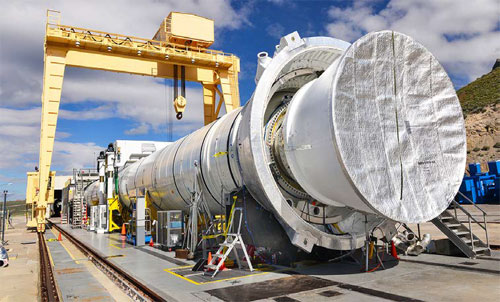By Brice Wallace
Defense, deterrence and dollars.
The military brings all three to Utah.
The last element — dollars — was the focus of a recent roundtable discussion following the release of report by the Kem C. Gardner Policy Institute focusing on Utah’s defense economy impacts and trends. The report indicates that the industry packs a $19.3 billion annual contribution to the state’s economy and has doubled its impact in a four-year period.
Using the 2019 fiscal year as its most recent year, the report also shows that the defense industry in Utah supports 211,285 jobs and accounts for 10.3 percent of the state’s employment, 9.5 percent of its personal income and 10.6 percent of its GDP. Since 2015, it has grown by 102,000 jobs and $9.1 billion in inflation-adjusted GDP.
“First of all, we learned defense is big — probably bigger than we thought,” said Kevin Sullivan, executive director of the Utah Defense Alliance, which commissioned the study. “Ten percent of Utah’s economy is a pretty big deal.”
Available at https://gardner.utah.edu/, the report includes the impacts from Dugway Proving Ground; Tooele Army Depot; the Utah National Guard; reserves, recruiting and ROTC; veterans; defense civilian retirees; and contracts and grants.
“We wanted to understand exactly what the magnitude and the impact of the defense sector was in the state,” Sullivan said, “and, secondly and maybe more importantly, we wanted to make sure other people understood the impact and the magnitude of the defense sector in the state.”
That “other people” group includes state legislators and other federal, state and local leaders, he said. “Because as they make decisions, they ought to know the magnitude and the impact of all of the industries in the state, and we wanted to make sure, candidly, that the defense sector was included in that computation.”
Two other roundtable participants also were impressed with the numbers reflected in the study.
“I think what it really demonstrates is Utah is a great place to perform the military missions and for our defense contractors to work here as well, and that growth is explosive,” said Gary Harter, executive director of the Utah Department of Veterans and Military Affairs. “We never knew it was going to be that high. We knew it was growing; we didn’t know it was going to be the 19.3 [billion economic impact], the 200,000-plus jobs and the 10 percent of the GDP.”
Maj. Gen. Michael Turley of the Utah National Guard said, “Ten percent of GDP is an enormous number,” that the industry having high-paying jobs is “encouraging to see,” and that military retirement income being so strong “speaks to the vibrancy of this as a career.”
“What’s important about this,” Turley said of the study, “is the fact that we were able to take things that we may have known instinctually about the impact of the defense industry in the state of Utah and put some empirical numbers to it, and that’s very, very beneficial from a Utah National Guard perspective because it tells the story both of a recruiting effort for us but also of retention.”
Sullivan said he also was impressed to find that the defense industry’s impacts are statewide.
“We knew that Davis and Weber counties around Hill Air Force Base were impacted hugely by the defense sector … but what we didn’t know is that virtually every county in this state has some impact,” he said. “Salt Lake County, for example, has a much, much bigger impact than we envisioned. … It’s the entire state. It really is a statewide impact.”
Turley said the Utah National Guard has activity in 15 of Utah’s 29 counties, allowing it to make “a huge impact in rural areas.” That follows a goal of Gov. Spencer Cox to spread Utah’s economic wealth throughout the state “and allow people to live in those places that they want to live but also participate in the economy,” Turley said.
The report also shows that military-related jobs pay well. In 1990, the average Utah defense job paid $61,320, above the typical non-defense pay of $48,981. In 2019, defense jobs paid an average of $85,377, while non-defense jobs paid a $62,929 average — a 36 percent difference.
Sullivan said defense positions are “family-sustaining jobs,” and Harter said “those wages are just terrific.”
Other statistics from the study show:
• Generally, the amount of defense contracts and grants accounted for about one-third of the defense industry’s overall economic impact. Hill Air Force Base also represented about one-third, while veterans accounted for up to one-fourth.
• Of the $4.3 billion in defense contracts in Utah, $3.3 billion, or 76 percent, went to 10 contractors. Northrop Grumman (nearly $1.7 billion), L-3 Communications (nearly $736 million) and Moog Inc. ($181.4 million) were the three largest entities, accounting for nearly $2.6 billion, or 60 percent, of total contracts.
• The amount of contracts and grants rose from nearly $1.8 billion in fiscal year 2015 to $4.4 billion in 2019.
• Hill Air Force Base is the largest military installation in Utah and the state’s sixth-largest employer. In 2019, it employed 4,521 active-duty military personnel, 1,137 Air Force reservists and 14,174 federal civilians.
• Defense personnel earned more than $13.9 billion in 2019.
• Defense-related activity generated net fiscal impacts of $244.3 million for the state.
• The number of direct jobs in the defense industry in 2019 was 65,117. Only transportation and warehousing and education services had more.








